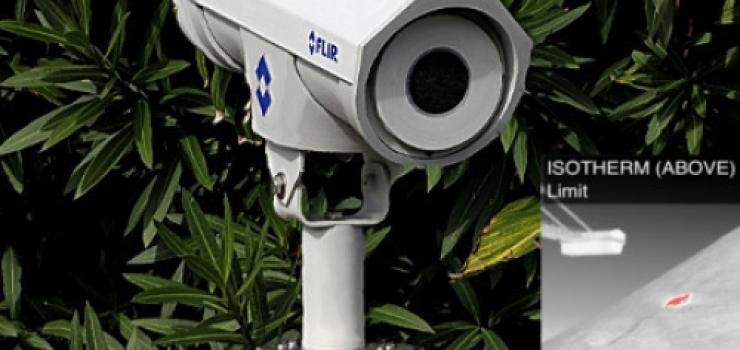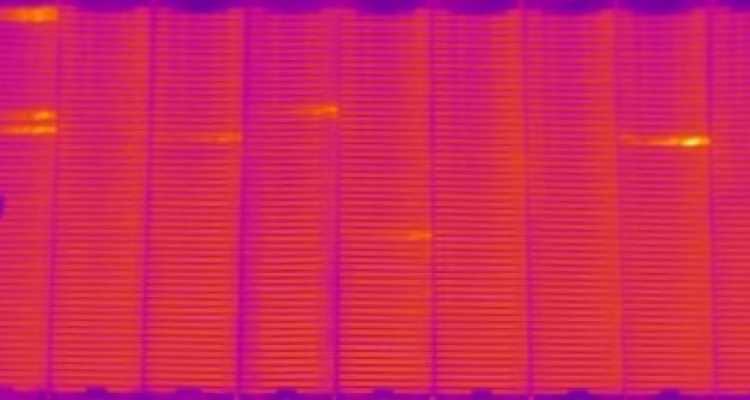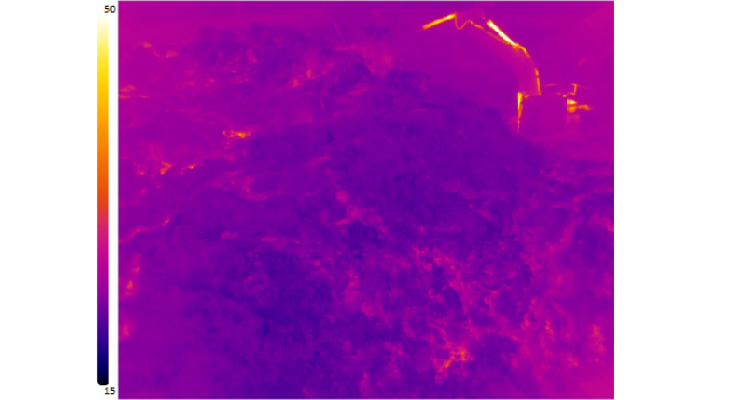Coal Stock Pile Spontaneous Combustion Early Detection

Coal Stock Pile Spontaneous Combustion
Spontaneous combustion is a common occurrence when storing coal for extended periods of time. This may also be problematic when stockpiling waste/spoil materials that contain large quantities of coal. Early detection and prevention of spontaneous combustion is critical in order to prevent serious incidents occurring.
 Figure 1. Early Detection of a hot spot on a stockpile that can lead to spontaneous combustion
Figure 1. Early Detection of a hot spot on a stockpile that can lead to spontaneous combustion
How Does Spontaneous Combustion Occur?
Coal naturally oxidises over time. This causes an exothermic reaction that produces heat. The reaction is accelerated by the addition of further heat (sunlight, hot winds,etc). If the heat from the coal oxidising is trapped it will continue to self-heat and will eventually rise above the ignition temperature. Once the ignition temperature is reached the risk of spontaneous combustion is extremely high. At this moment only oxygen is needed to cause the coal to ignite and spontaneously combust. Since coal is a fuel source and is able to generate its own heat, the risk of a small fire quickly getting out of control is quite high.
Spontaneous combustion can happen with any soil with high coal content. This includes waste/spoil which may cause scrub fires if not disposed of properly.
Once a stockpile has spontaneous combusted it is hard to contain and extinguish. Typically the burning coal must be spread thinly over a wide area and be allowed to cool and extinguished with sprinklers. Applying sprinklers to the surface of a coal stockpile that has spontaneously combusted is typically not an effective method. If the coal is not spread out and extinguished, the coal will continue to self-heat enlarging the problem.
Risks Associated With Spontaneous Combustion
Besides the obvious risk of being a fire hazard and being hard to extinguish once established, the following risks are realised:
- Harmful green house gases are emitted (S02, NOx, H2S, CO)
- Fine particles will be emitted as a result of the combustion
- Harmful/Toxic air pollutants
- Odours that can travel via wind
- Hazard to the general public, waste/spoil piles can cause scrub fires
- Long-term problems such as soil contamination, rehabilitation in the case of spoil/waste piles
- Fines and restrictions
Spontaneous Combustion Prevention
To prevent spontaneous combustion one of the following factors must be removed:
- Fuel (The coal itself)
- Heat (Which can be either generated by the coal and/or solar radiation from the sun)
- Oxygen (Which is supplied readily through contact with air)
The fuel itself cannot be removed in coal stock piles. In waste/spoils the ratio of coal and be diluted to a level where the fuels are evenly spread over a large area.
Heat will always be generated if a large quantity of coal is lumped together. The problem is accelerated if the heat is allowed to be trapped and cannot escape. Typically moving the stock pile to another location every 2-3days can prevent the coal from accumulating enough heat to spontaneously combust. This method allows it to cool as it is travels on conveyors. Sprinklers can assist in curbing dust and lowering the risk of spontaneous combustion.
Oxygen can be removed by covering the coal with a sufficient quantity of top soil. This is only really applicable if the pile is waste/spoil.
None of these methods ensure that spontaneous combustion will not occur, they merely minimise the risk of the event occurring.
Spontaneous Combustion Early Detection
Early detection is critical in preventing spontaneous combustion. The first stage of spontaneous combustion is accumulating enough heat to ignite. The use of a radiometric thermal camera allows early detection of problem areas before they spontaneously combust. A radiometric thermal camera takes the guess work out of fire detection and prevention. It provides a means of detecting hotspots in stockpiles before they become problematic and cause downtime.
IMC have developed a deployable vehicle based thermal inspection system. By performing daily site inspections from a vehicle, potential problem areas can be identified days before spontaneous combustion has occurred.

Figure 2. IMCs deployable vehicle mount thermal inspection system
Using a non-contact FLIR long-wave infrared camera, the heat emitted from oxidising coal and be easily detected without the need for temperature measurement probes or complex site models.
The problem areas become easy to identify during hours when the sun has set as the reflected heat from solar radiation is removed and the coal starts to cool as the ambient temperature drops. Early morning is typically an excellent time to perform an inspection as the stockpile will be cool except for areas that have developing problems.
IMCs system can be easily detached from the vehicle and deployed out in the field temporarily. The video feed can be viewed remotely from offices as needed.
 Figure 3. Detachable remote thermal monitoring system
Figure 3. Detachable remote thermal monitoring system
Designed for ease of use this system incorporates an wireless controller with inboard vehicle display. These features give this system extra flexibility and an ergonomic user interface.

Figure 4. Vehicle based thermal inspection system fully controllable from inside a vehicle
Locations of hotspots can be geo-tagged an viewed on Google maps. This allows for a containment teams to effectively plan coordinate stockpile hazard mitigation. Having this system onsite enables early detection and prevention of stockpile spontaneous combustion. It provides a means of detecting hotspots in stockpiles before they become problematic and cause downtime.

Figure 5. Images taken with the system can be geo-tagged and viewed on google maps
The modular system can also be used for inspecting the entire plant as a whole. This can provide a means of efficiently carrying out noninvasive maintenance inspections for worn conveyors rollers, rubbing belts, heated bearings in large motors and much more.


